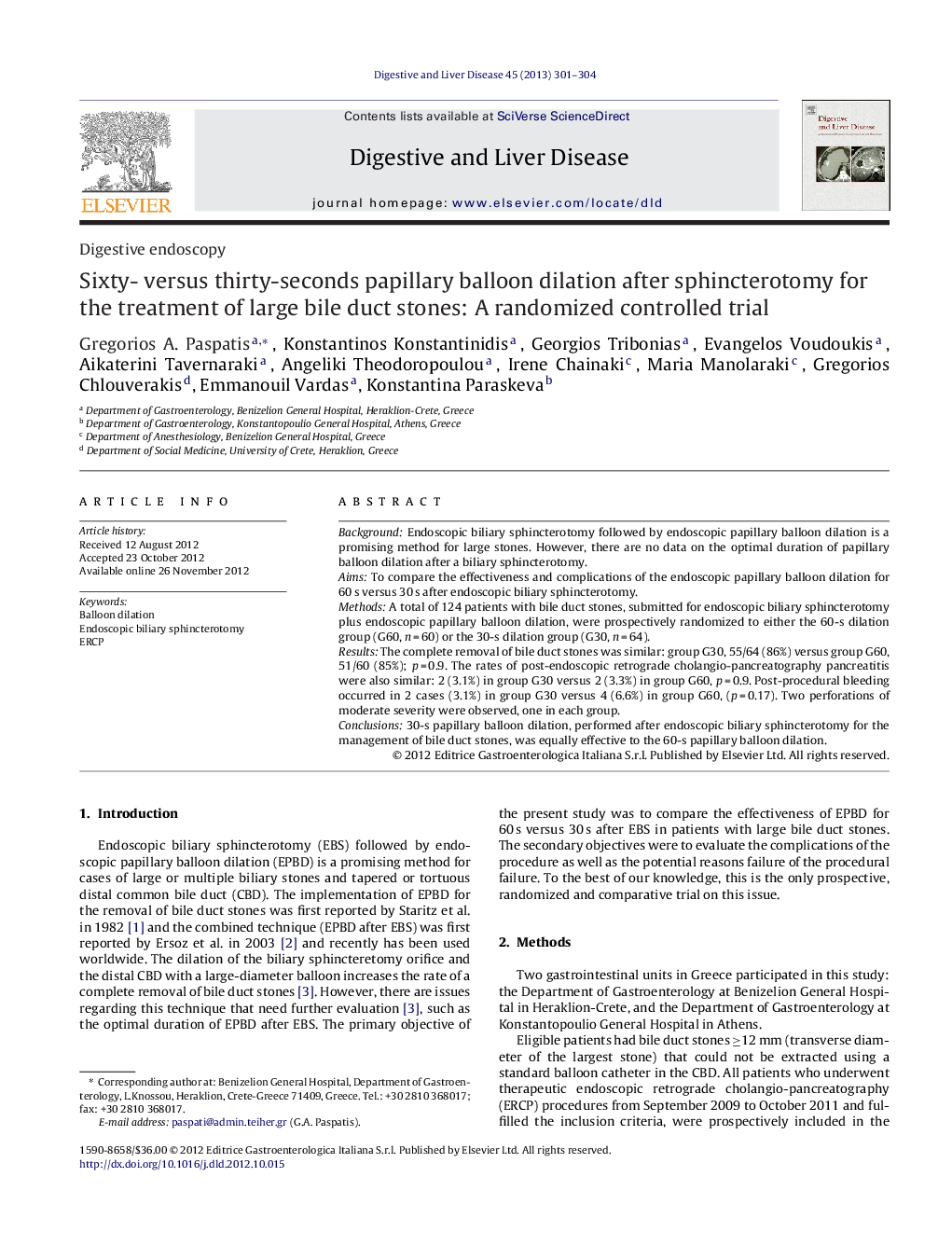| Article ID | Journal | Published Year | Pages | File Type |
|---|---|---|---|---|
| 3262137 | Digestive and Liver Disease | 2013 | 4 Pages |
BackgroundEndoscopic biliary sphincterotomy followed by endoscopic papillary balloon dilation is a promising method for large stones. However, there are no data on the optimal duration of papillary balloon dilation after a biliary sphincterotomy.AimsTo compare the effectiveness and complications of the endoscopic papillary balloon dilation for 60 s versus 30 s after endoscopic biliary sphincterotomy.MethodsA total of 124 patients with bile duct stones, submitted for endoscopic biliary sphincterotomy plus endoscopic papillary balloon dilation, were prospectively randomized to either the 60-s dilation group (G60, n = 60) or the 30-s dilation group (G30, n = 64).ResultsThe complete removal of bile duct stones was similar: group G30, 55/64 (86%) versus group G60, 51/60 (85%); p = 0.9. The rates of post-endoscopic retrograde cholangio-pancreatography pancreatitis were also similar: 2 (3.1%) in group G30 versus 2 (3.3%) in group G60, p = 0.9. Post-procedural bleeding occurred in 2 cases (3.1%) in group G30 versus 4 (6.6%) in group G60, (p = 0.17). Two perforations of moderate severity were observed, one in each group.Conclusions30-s papillary balloon dilation, performed after endoscopic biliary sphincterotomy for the management of bile duct stones, was equally effective to the 60-s papillary balloon dilation.
